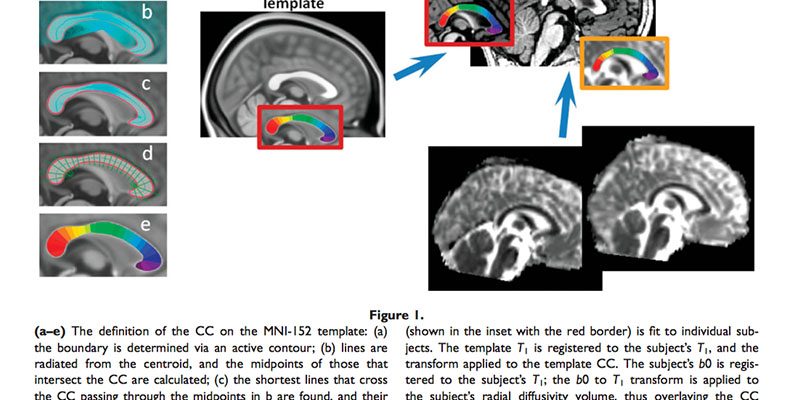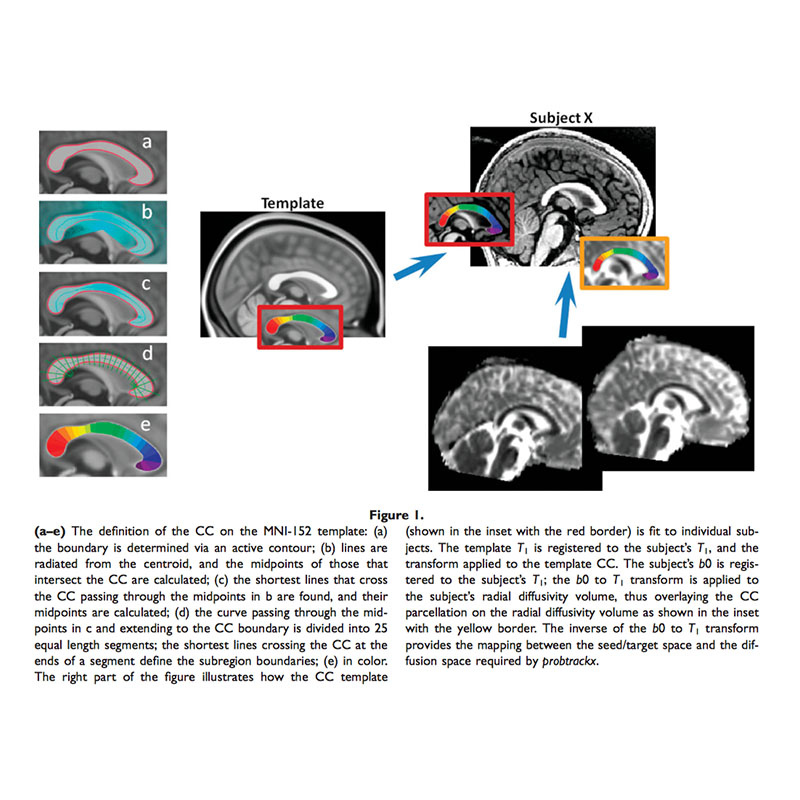Hum Brain Mapp. 2013 Jul;34(7):1685-95. doi: 10.1002/hbm.22018. Epub 2012 Feb 22.
Lewis JD1, Theilmann RJ, Fonov V, Bellec P, Lincoln A, Evans AC, Townsend J.
Author information
- Montreal Neurological Institute, McGill University, Montreal, Québec, Canada. jlewis@bic.mni.mcgill.ca
Abstract
Typical adults show an inverse relation between callosal fiber length and degree of interhemispheric connectivity. This has been hypothesized to be a consequence of the influence of conduction delays and cellular costs during development on axonal pruning, both of which increase with fiber length. Autism spectrum disorder (ASD) provides a test of this hypothesis: Children with ASD are known to have enlarged brains; thus, adults with ASD should show reductions in interhemispheric connectivity proportional to their degree of brain overgrowth during development. This prediction was tested by assessing the relation between both the size and structure of the corpus callosum and callosal fiber length, adjusting for intracranial volume, which is thought to reflect maximum brain size achieved during development. Using tractography to estimate the length of callosal fibers emanating from all areas of cortex, and through which region of the corpus callosum they pass, we show that adults with ASD show an inverse relation between callosal fiber length, adjusted for intracranial volume, and callosum size, and a positive relation between adjusted callosal fiber length and radial diffusivity. The results provide support for the hypothesized impact of fiber length during development.
Copyright © 2012 Wiley Periodicals, Inc.
PMID:22359385 | DOI:10.1002/hbm.22018
Publication
Publication types
MeSH terms
- Adult
- Autistic Disorder/pathology*
- Brain Mapping*
- Corpus Callosum/pathology*
- Diffusion Magnetic Resonance Imaging
- Functional Laterality/physiology*
- Humans
- Image Processing, Computer-Assisted
- Male
- Middle Aged
- Neural Pathways/pathology*
- Young Adult
Grant support
More resources



